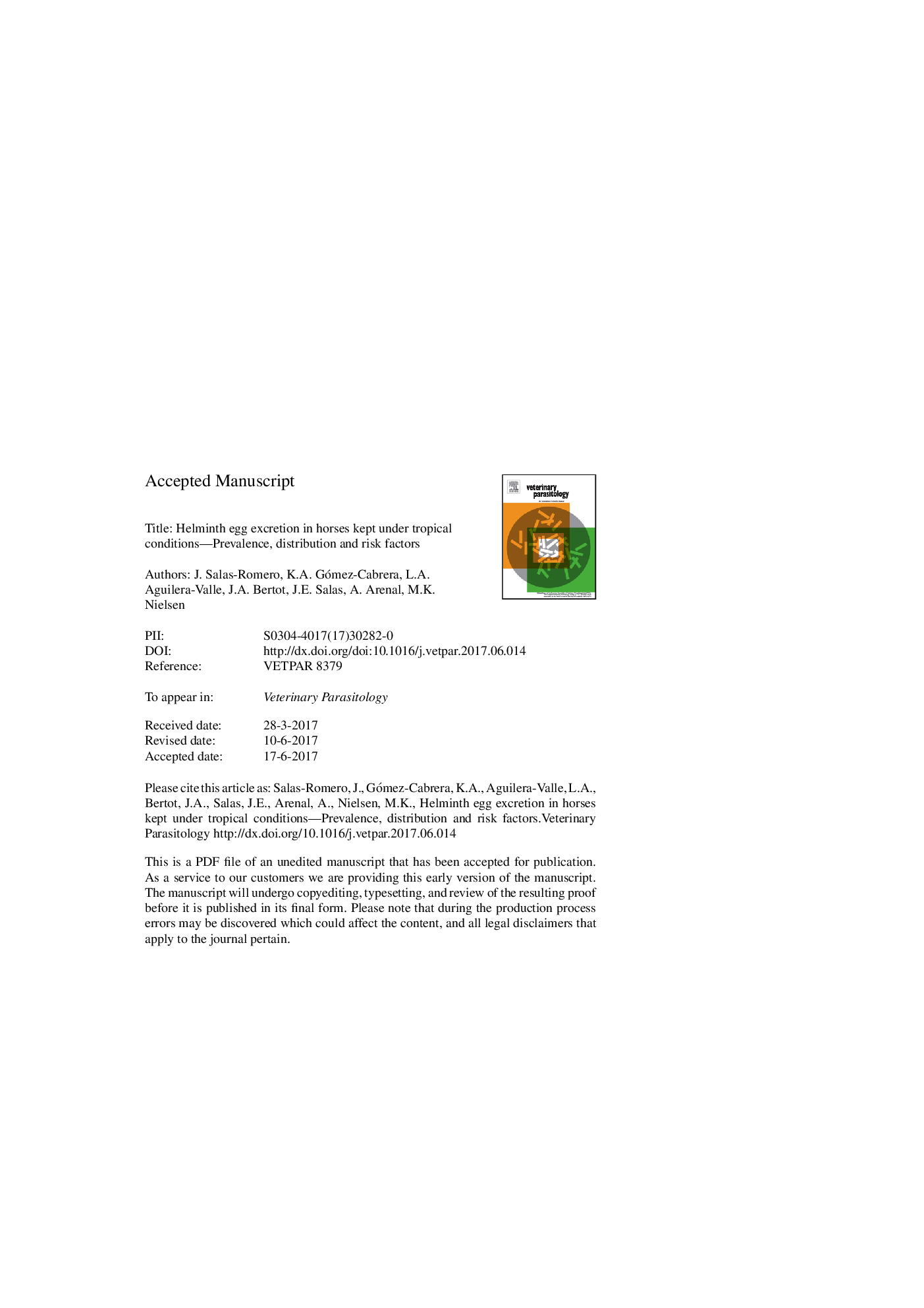| کد مقاله | کد نشریه | سال انتشار | مقاله انگلیسی | نسخه تمام متن |
|---|---|---|---|---|
| 5545607 | 1555633 | 2017 | 18 صفحه PDF | دانلود رایگان |
عنوان انگلیسی مقاله ISI
Helminth egg excretion in horses kept under tropical conditions-Prevalence, distribution and risk factors
ترجمه فارسی عنوان
دفع تخم مرغ هلمینت در اسب های تحت شرایط گرمسیری - شیوع، توزیع و عوامل خطر
دانلود مقاله + سفارش ترجمه
دانلود مقاله ISI انگلیسی
رایگان برای ایرانیان
موضوعات مرتبط
علوم زیستی و بیوفناوری
علوم کشاورزی و بیولوژیک
علوم دامی و جانورشناسی
چکیده انگلیسی
Increasing levels of anthelmintic resistance observed in equine cyathostomin parasites have led to recommendations of selective anthelmintic treatment strategies to lower the selection pressure favoring resistant populations. This principle is based on determining strongyle fecal egg counts from all herd members, and treating those exceeding a predetermined treatment cutoff. However, epidemiological information is lacking from horses kept under tropical conditions, where parasite burdens may be of a different composition and magnitude compared to those of horses kept under temperate climate conditions. The aim of the present work was to characterize the strongylid fauna in horses kept in tropical Camagüey, Cuba and identify risk factors associated with strongylid and ascarid egg counts. A total of 396 horses from eight different establishments were included in the study. Coprocultures revealed that Strongylus vulgaris and cyathostomins, sensu lato, were detected in all of those establishments. Prevalence and mean value of strongylid eggs per gram of feces were 97% and 1436, respectively. Eggs of Parascaris spp. were observed in 10% of horses. A multivariate mixed linear model identified sex (p = 0.022), month (p = 0.044), operation type (p = 0.037) and time since last deworming (p < 0.001) to be significantly associated in with the magnitude of strongylid fecal egg counts. A multivariate logistic regression identified horses less than two years of age (p = 0.010) and horses not receiving anthelmintic treatment (p < 0.001) to be significantly more likely to harbor Parascaris spp. parasites. The high magnitude and prevalence of strongylid fecal egg counts observed and the common occurrence of S. vulgaris suggest that strongylid parasite burdens are substantially different from those typically observed in managed equines kept under more temperate conditions.
ناشر
Database: Elsevier - ScienceDirect (ساینس دایرکت)
Journal: Veterinary Parasitology - Volume 243, 30 August 2017, Pages 256-259
Journal: Veterinary Parasitology - Volume 243, 30 August 2017, Pages 256-259
نویسندگان
J. Salas-Romero, K.A. Gómez-Cabrera, L.A. Aguilera-Valle, J.A. Bertot, J.E. Salas, A. Arenal, M.K. Nielsen,
